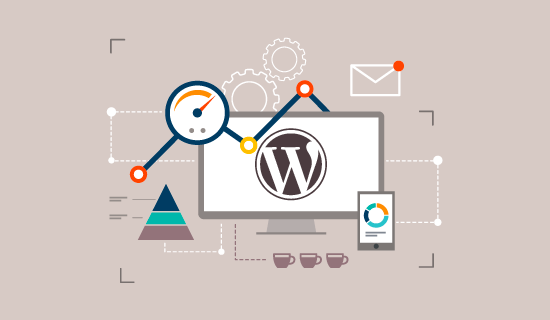Tips to Boost WordPress Website Speed & Performance : Website speed can effect the user expression. Slow website speed can reduce the experience of user toward your site. It also reduce the site pageview and effect your site SEO. On the other hand great website speed, increase the performance of site, improve your pageviews, and help with your WordPress SEO.
If you are looking for ways to increase the website speed. Your lucky. We are here to help you to show you some tips and ways to boost your WordPress website speed.
Why Speed is Important for Your WordPress Site?
Studies show that from 2000 to 2016, the average human attention span has dropped from 12 seconds to 7 seconds.
What does this mean for you as a website owner?
You have very little time to show users your content and convince them to stay on your website.
A slow website means users will potentially leave your website before it even loads.
According to a StrangeLoop case study that involved Amazon, Google, and other larger sites, a 1 second delay in page load time can lead to 7{7c1f727ad66a597ae78cabc4b59d9c205bdf504ab3f799bca935c953578dc3bd} loss in conversions, 11{7c1f727ad66a597ae78cabc4b59d9c205bdf504ab3f799bca935c953578dc3bd} fewer page views, and 16{7c1f727ad66a597ae78cabc4b59d9c205bdf504ab3f799bca935c953578dc3bd} decrease in customer satisfaction.
Importance of Good WordPress Hosting
Your WordPress hosting service plays an important role in website performance. A good shared hosting provider like BlueHost or Siteground take the extra measures to optimize your website for performance.
However, on shared hosting you share the server resources with many other customers. This means that if your neighboring site gets a lot of traffic, then it can impact the entire server performance which in turn will slow down your website.
On the other hand, using a managed WordPress hosting service give you the most optimized server configurations to run WordPress. Managed WordPress hosting companies also offer automatic backups, automatic WordPress updates, and more advanced security configurations to protect your website.
We recommend WPEngine as our preferred managed WordPress hosting provider. They’re also the most popular one in the industry. (See our special WPEngine coupon).
Delete Unused Plugins + Find Slow Plugins With P3
The more plugins installed on your site, the slower your WordPress speed performance will be. Too many plugins (or 1 large plugin) can be the main culprit of your slow load times. Installing Plugin Performance Profiler and running a scan tells you which plugins are slowing down your site. Go through each plugin and consider deleting it, replacing it with code (eg. using a widget instead of a Facebook plugin), or find an alternative lightweight plugin.
Lessen the number of plugins on your website
If you keep unwanted plugins on your WordPress powered website, it will increase the amount of junk on your web files. It will also result in an overwhelming amount of load on your server’s resources while your backs up files are being generated.
To resolve this, perform regular database maintenance by uninstalling plugins that you’re not using. Keep in mind that unused plugins continue to accumulate temporary disk space and data. If you can’t tell which plugin is taking up a lot of space, try disabling each one, and then measuring your server’s performance. You will then find out which one adversely affects site performance.
You can also use third-party services that automates or schedules tasks like sharing your posts to social media.Zappler, for instance, is a service that helps in automating tasks, which will then decrease the weight on your server resources and website.
Disable hotlinking and leeching of your content
Hotlinking is a form of bandwidth “theft.” It occurs when other sites direct link to the images on your site from their articles making your server load increasingly high.
This can add up as more and more people “scrape” your posts or your site (and especially images) become more popular, as must do if you create custom images for your site on a regular basis.
You’ll notice I included my feed (from FeedBurner), you’ll need to replace it with your feed’s name, otherwise your images won’t appear correctly there.
